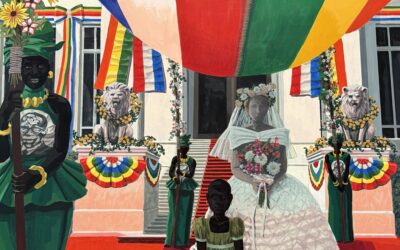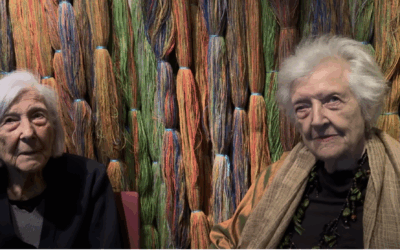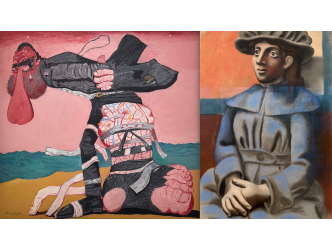Immense freedom
Imagine an artist whose work features in the permanent collections of the world’s most prestigious institutions—from MoMA in New York to the Tate in London, from LACMA in Los Angeles to the Centre Pompidou—yet who has never truly received international recognition. That woman is a remarkable painter born in Lebanon in 1931, the daughter of Bechara El Khoury, the first president of the Lebanese Republic. She passed away in Beirut in 2019 after living a bohemian life of immense freedom, from Paris to Los Angeles.
Women in abstraction
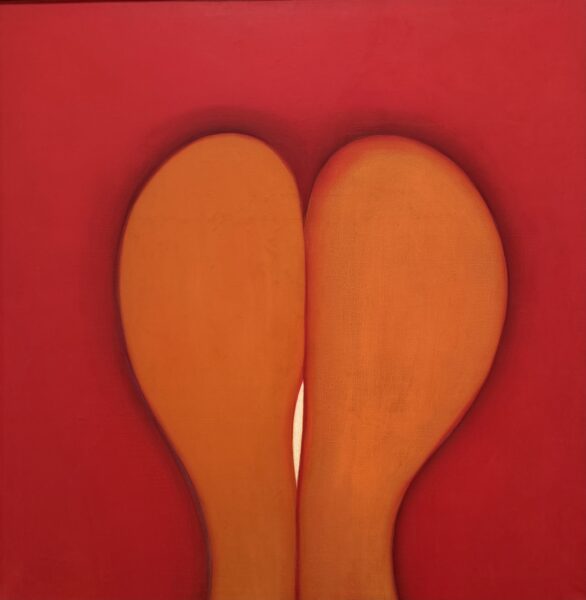
Certainly, in recent years, Caland’s work has finally come to be revealed to the public: In 2024 at the Kamel Mennour gallery in Paris, in 2022 at WIELS, the center for contemporary art in Brussels, and a year earlier as part of the landmark exhibition on global female abstract painters, “Women in Abstraction,” at the Centre Pompidou and the Guggenheim Bilbao. But until now, there had been no major monograph devoted to this extraordinary inventor of form. Now, at last, Spain’s great modern art museum, the Reina Sofia, has given her a retrospective in 300 works, on view through August 25. It does her ample justice. One is swept away by her powerful and cohesive energy.
Overlooked
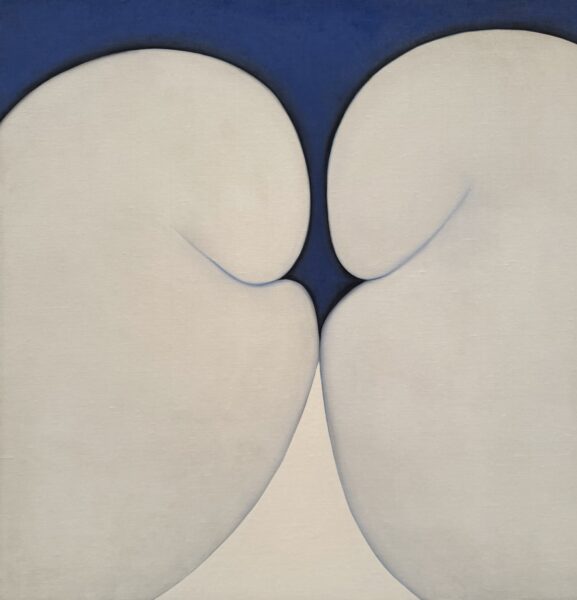
And yet, for the visitor, all these discoveries raise a question: Why didn’t Huguette Caland receive more recognition until now? How could such a rich body of work have been overlooked?
One of her three children, Pierre Caland, has a theory:
Pierre Caland
“First, she was a woman. And then, she was Lebanese—not French, not American—at a time when Paris and New York made the rules. She began painting relatively late, after her father’s death in 1964. She was overweight and unapologetically embraced a liberated sexuality—with women, with men, sometimes in groups—which sharply contrasted with the norms of the time, especially in such a conservative society as Lebanon’s.”
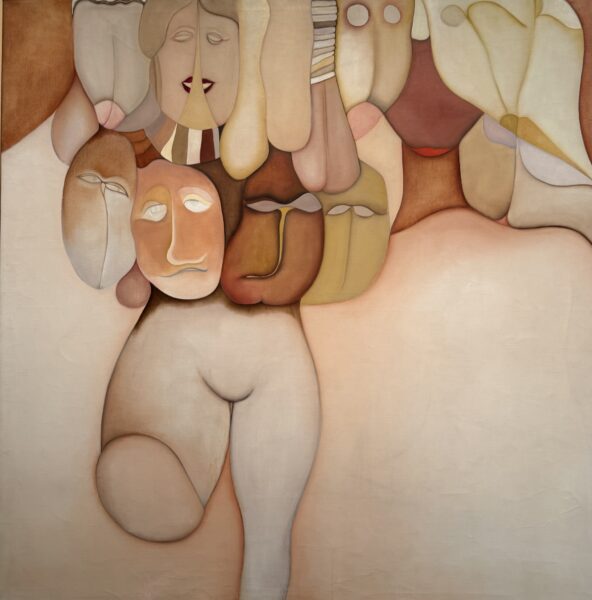
3 periods
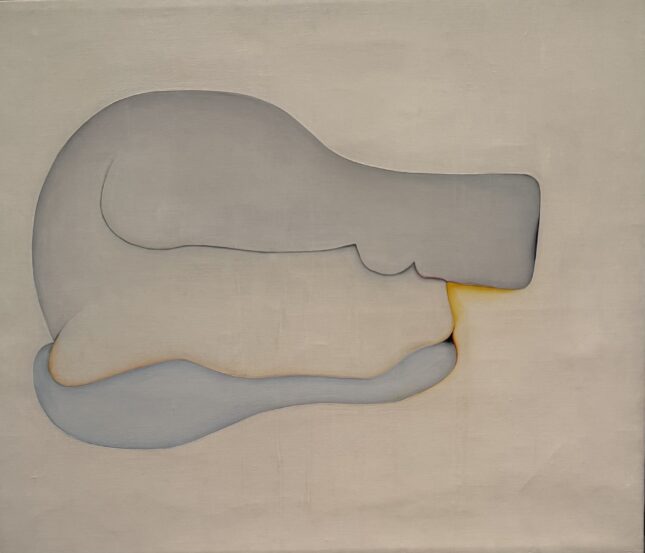
When outlining Caland’s artistic trajectory, one could subdivide it into three periods. The first, her gestational period in the 1960s, was composed of serpentine forms divided into colorful cells in a style reminiscent of Dubuffet. The second, spanning the 1970s and ’80s, is the most striking. It deals with the body. She once said, “Nothing looks more like a body than a landscape.”
Fragments of human anatomy

In fact, Caland depicts fragments—one might even say blocks—of human anatomy in unexpected colors (sky blue, burnt orange). Here, she can be seen as a direct heir to Georgia O’Keeffe, whose polychromatic curves hover between mountain ranges and feminine intimacy. This is the extraordinary series Caland called “Bribes de corps” (“Body Fragments”).
Floral friezes
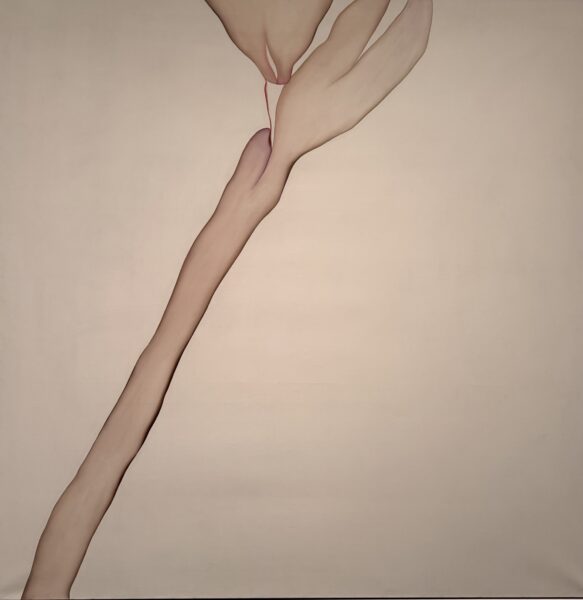
Later, she created graceful, undulating and highly floral friezes which seem to float in space. She plays with empty space, unafraid of using the white canvas to give her compositions the illusion of subtle movement. Finally, in the last phase of her life, up to her death, she filled her canvases with a world of dense lines and dots in a darker palette. One can see in them the saturation of urban landscapes or perhaps a reinterpretation of the rich tradition of Middle Eastern textiles.
Fashion

And like certain modern artists before her—Sonia Delaunay comes to mind—Huguette Caland’s aesthetic emancipation extended to her fashion. She wore caftans that she herself embroidered with motifs of eyes, kissing profiles, even nude female bodies.
She once said, “The medium I work with most is my life.”
And we are spellbound.
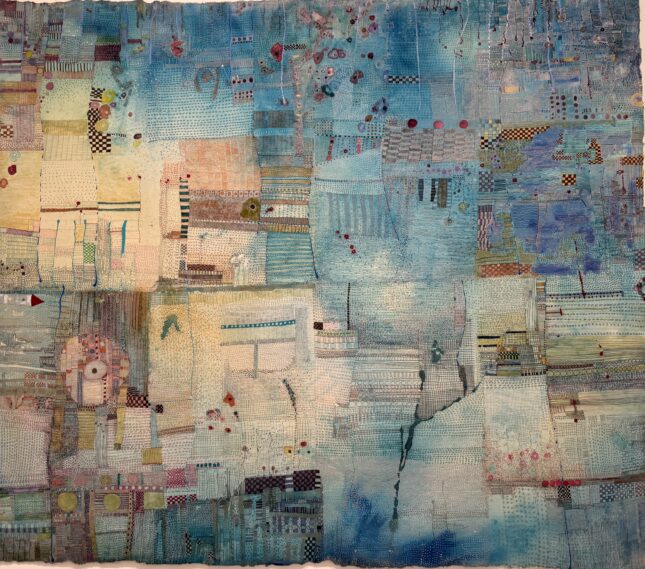
Through August 25. www.museoreinasofia.es/en/exhibitions/huguette-caland
Support independent art journalist
If you value Judith Benhamou Reports, consider supporting our work. Your contribution keeps JB Reports independent and ad-free.
Choose a monthly or one-time donation — even a small amount makes a difference.
You can cancel a recurring donation at any time.


